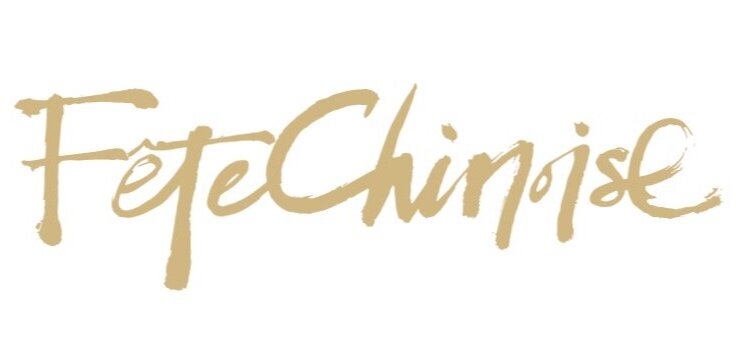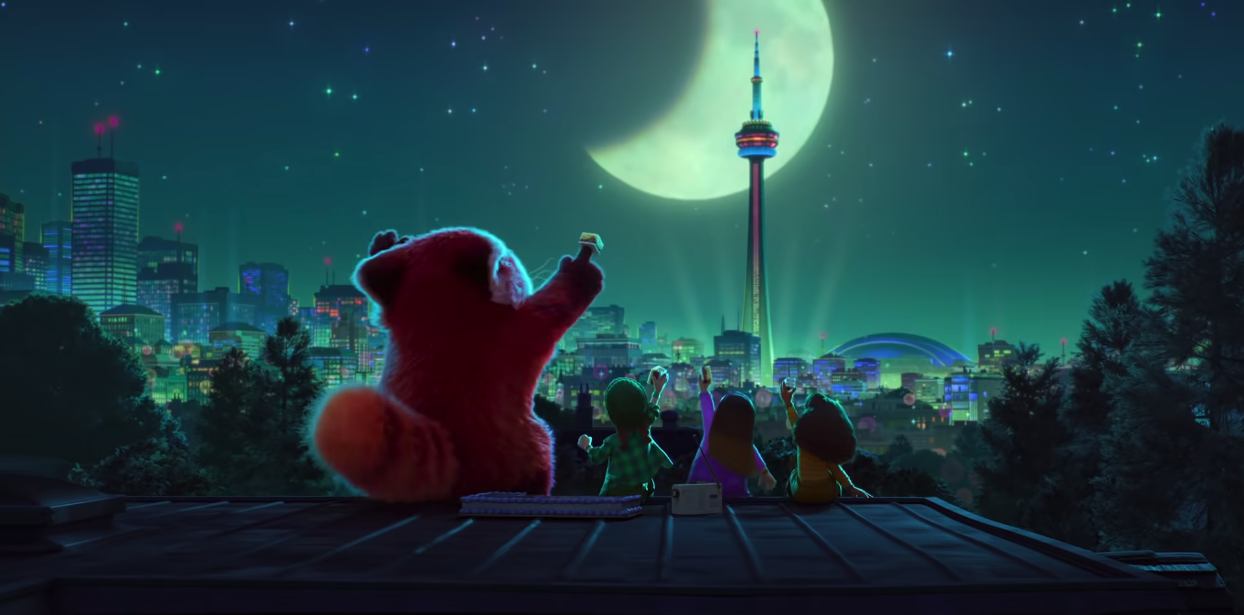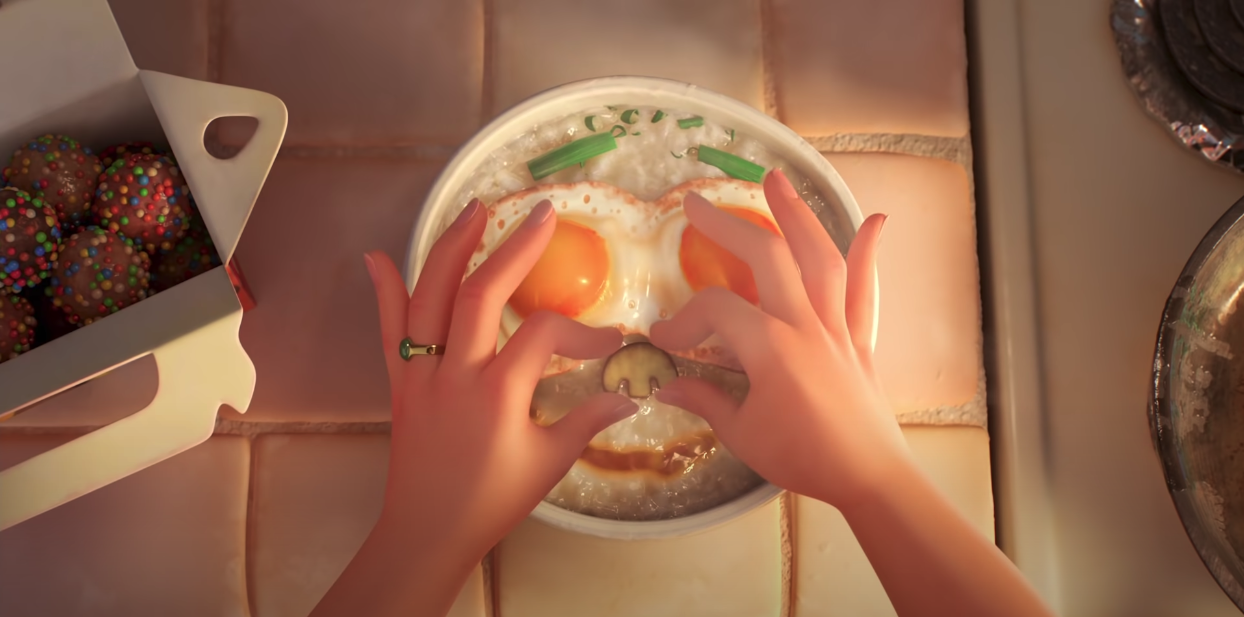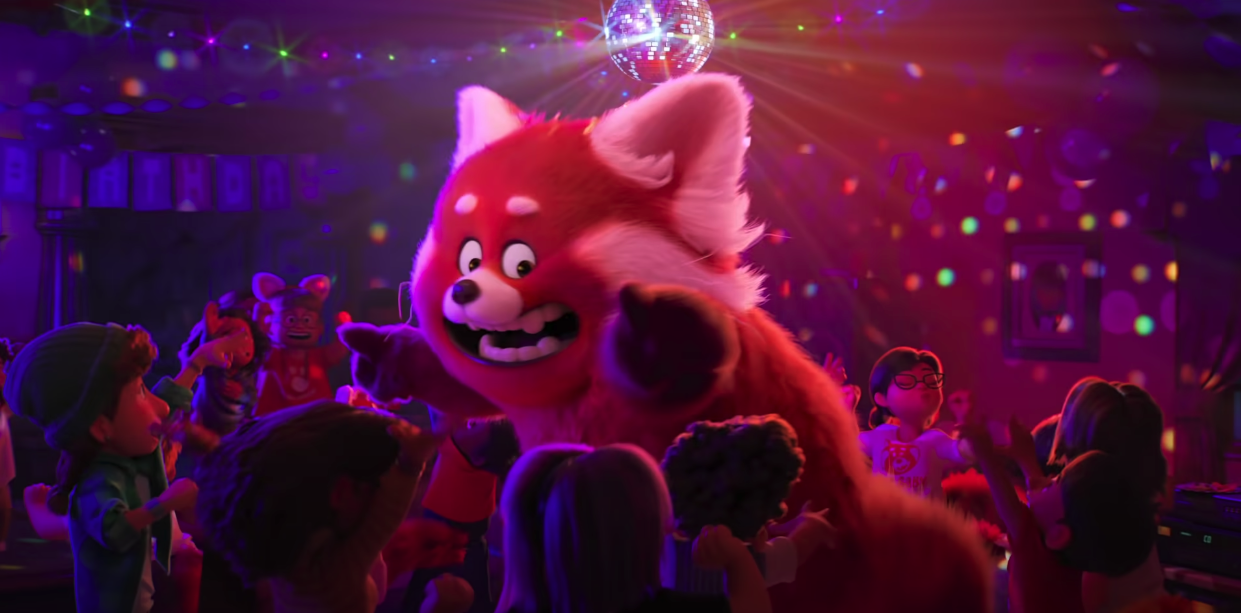Turning Red: A Disney Pixar Chinese-Canadian Fairytale
WRITTEN by Deborah lau-yu
Images: courtesy of George pimentel, disney + Pixar
Turning Red OFFICIAL Trailer | Youtube | Pixar + Disney
A lot of Canadian, a lot of History Being Made
Canadian acting legend Sandra Oh is the voice of Ming, mother of the main character Meilin Lee, who is brought to life by teenage actor Rosalie Chiang. Chiang scored the role at 12, and has worked on this project for 4 years, which accounts for a quarter of her life thus far! Maitreyi Ramakrishnan, also from the GTA (Mississauga) and star of Never Have I Ever is the voice of Priya, one of the gals in Meilin’s group, who delivers every word in deadpan. The new sparks of chemistry in this group of women is undeniable in the film and in person during the live Q&A.
domee shi and Main casts of Turning Red | Photo: george pimentel / disney
The director at the helm of the movie is Chinese-Canadian Sheridan graduate Domee Shi, only 32, who in 2018 took home an Oscar for her short, Bao. Turning Red marks her directorial debut of a feature film, where throughout the story, she weaves in moments of her love for Chinese food just as she did in her short. This movie has been referred to as her love letter to Toronto, and the city certainly looks beautiful in all the magically animated scenes that delight in joyful colours — and also a love letter to adolescence, puberty and growing up with friends, millennial boy bands, Chinese culture, and the diversity of Canadian neighbourhoods like Chinatown and Scarborough, where Domee grew up. As the visionary, she has integrated many moments of her own story into the film, including a famously discussed and hilarious scene of her mother spying on her, with sunglasses on, at her school.
Turning Red shatters every ceiling that comes to mind in one film: Domee Shi is the first female director of a Pixar film, also the first Chinese-Canadian; it is the first Disney film with a Canadian setting and about a Canadian girl. The specificity of Chinese Diaspora in Toronto makes it not only special for Torontonians but for any audience, it should feel refreshingly authentic. This huge step forward hopefully represents the future of Pixar films, where stories will be more and more diverse and inclusive!
Was it good? It was incredible! This is possibly the most relatable Disney Pixar film that I have watched, and that I see myself in the story. But even for people who are not Chinese-Canadian first generation females, this was relatable. Growing up IS hard, and it is messy and challenging in the relational aspects that change and warp during a tenuous time of emotions and hormones, peer pressure and competing expectations.
domee shi | Photo: george pimentel / disney
Chinese Culture at the Centre of the Film
Turning Red OFFICIAL Trailer | Youtube | Pixar + Disney
Turning Red OFFICIAL Trailer | Youtube | Pixar + Disney
Let’s spend some more time on the topic of Chinese culture in the film. It isn’t integrated or applied, it just is. What you will see is not a ancient tale like Mulan, where Chinese culture still feels miles away from your theatre seat or couch. In Turning Red, Chinese culture is just there, everyday, in the food on the table, the values of elders, parental expectations (for better or worse), the blend of culture and rituals, and the list goes on. This constant tension of family and growing up juggling concepts of East and West is something that many, if not all, immigrant families can relate to across North America.
Turning Red OFFICIAL Trailer | Youtube | Pixar + Disney
Chinese diaspora is visually captivating in the film, brought to life in romanticized palettes and adorable animation drawings. You will see salivating spreads of Chinese home-cooking, gorgeous pastel spring blossom trees in pinks and purple tones, lively moments of Chinatown and Kensington Market, intricate details of a Chinese temple with the clay roof tiles in jade, nostalgic settings inside the home with porcelain potted plants that flank calligraphic scroll paintings and rosewood pieces, all dotted with wholesome Canadian moments of the TTC streetcars a.k.a. the Red Rocket, a box of Timbits, the CN Tower and details like Lester B. Pearson high school and a Daisy Mart. It is complete with the main character’s obsession with an American boy band. This is what diaspora looks like. It’s messy, its full, it’s interesting, it’s nuanced… and it is magical in this Chinese-Canadian fairytale. (A new phrase to savour!)
The Title and the Colour Red
The genius of the movie title Turning Red has been under discussed. Turning Red is brilliant for so many reasons, and probably more. Red, as squeezed into the film in a short line of humour, “is a lucky colour” in Chinese culture. At Lunar New Year and Mid-Autumn Festival, for all special occasions and home decor, red is synonymous for prosperity, luck and fortune. Meilin’s character starts the film wearing a red knit cardigan. And of course without revealing too much more, the red panda is at the heart of the film.
Turning Red OFFICIAL Trailer | Youtube | Pixar + Disney
The story has Meilin exploding into a red panda upon epic emotions, and it signifies the monstrosity of growing up and hitting puberty, and normalizes it by featuring it front and centre. “Has the red peony bloomed?” Meilin’s mom asks, linking two opposing motions at play —- red peonies are considered to be auspicious and lucky and of course getting your period is associated with blood, pain and all that comes with it. In a genius move, the film brushes upon the unsolvable mystery of the colour red. It is Chinese tradition …and sometimes a stereotype. It is always lucky and yet sometimes not so much when it has to do with anger, emotions and a period. It could also mean blushing with embarrassment, which also happens often for the main character!
As the film progresses, and we see Meilin embrace her red panda, which is then transformed into something positive and personal. The choice of ‘Turning Red’ and the playfulness of the film invites us to read deeper into its layers of meaning. For any Chinese-Canadian who has has to grapple with what needs to be red, how much red, when it needs to be red, never to write words in red, and been asked about red, this will definitely resonate with you!
Turning Red OFFICIAL Trailer | Youtube | Pixar + Disney
Turning Red Toronto Tiff LightBox Premiere | Photo: george pimentel / disney
5 Stars ★★★★★
We give Turning Red five stars out of five! It is a heartfelt film that will make you feel and relate on many levels. It will have you bopping along with the catchy beats of the millennial boy band and reminiscing your teenage years, especially for anyone who went to high school in the late 90’s to 2000’s. For Chinese-Canadians, this is the film you have been waiting for, to see yourself and your peers in, and to reflect on some of the generational relationships that you may or may not still be reconciling.
Watch the Official Trailer
About the writer, Deborah Lau-Yu












